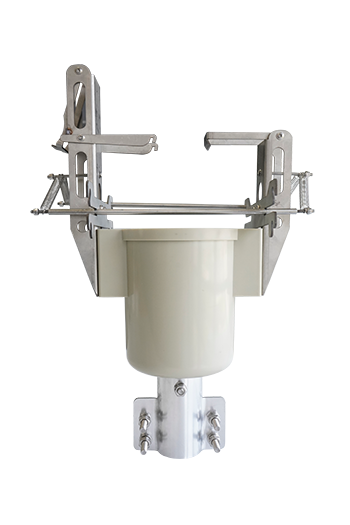News
The Scale of Laying Underground Transmission Lines in the World Continues to Expand
Date:2022-11-18
Underground transmission lines refers to laying wires underground to transmit electric energy and expand the space above the ground. Underground transmission lines refer to the general term for electric power cables laid underground. In addition to being buried directly underground with cable trench protection, they are also laid on scaffolds or cable trenches set up in underground channels or tunnels. They are in Concrete reinforcement at appropriate intervals configures the piping to be erected on so-called pipe racks. Especially when the high-voltage overhead line passes through the city, due to various restrictions on security and the consideration of the city's aesthetics, underground transmission lines is used to transmit power to modern large cities.

1. Introduction to underground transmission lines
Wires are laid underground to transmit electrical energy. In urban residential areas or areas where it is difficult to erect overhead transmission lines across rivers, straits, etc., after a comprehensive comparison of various factors such as technology, economy, and environmental protection, underground lines are often used for power transmission.
Practical underground transmission lines are power cables, including duct-filled cables utilizing sf gas insulation and epoxy resin spacer rods to support the conductors. Since the 1970s, there have been low-temperature and low-resistance cables for power transmission. With the advancement of superconducting technology, research on superconducting power transmission is also being actively carried out. The laying methods of underground transmission lines include direct burial, tunnel and underground trench. Route selection needs to consider road facilities and traffic conditions, existing underground buried objects, as well as geology, water level and other conditions, so that the total length of the route should be as short as possible.
The transmission capacity of the cable is mainly determined by the allowable current. The allowable current is limited by the allowable temperature of the cable insulation. The allowable temperature means that when the current passes through the cable, the temperature rise of the conductor caused by the combined effects of resistance loss, dielectric loss, and base temperature must not exceed the temperature that the cable insulator can withstand. The engineering design needs to be calculated separately according to the three working conditions of long-time power-on, short-time power-on and short-circuit. In order to increase the allowable current, power cables are often forced to cool with oil, water or air.
2. Underground transmission lines
Underground transmission lines are lines that lay wires underground to transmit electrical energy. In urban residential areas or areas where it is difficult to erect overhead transmission lines across rivers and straits, after comprehensive comparison of various factors such as technology, economy and environmental protection, underground transmission lines are mostly used.
Practical underground transmission lines are power cables, including duct-filled cables utilizing sulfur hexafluoride gas insulation and epoxy spacer rods to support the conductors. Since the 1970s, there have been low-temperature and low-resistance cables for power transmission. With the advancement of superconducting technology, research on superconducting power transmission is also being actively carried out.
The laying methods of underground transmission lines include direct burial, tunnel and underground trench. The route selection must consider road facilities and traffic conditions, existing underground buried objects, geology, water level and other conditions, so as to keep the total length of the line as short as possible.
The transmission capacity of the cable is mainly determined by the allowable current. The allowable current is limited by the allowable temperature of the cable insulation. The allowable temperature means that when the current passes through the cable, the temperature rise of the conductor caused by the combined effects of resistance loss, dielectric loss, and base temperature must not exceed the temperature that the cable insulator can withstand. The engineering design must be calculated according to the three working conditions of long-time power-on, short-time power-on and short-circuit. In order to increase the allowable current, power cables are often forced to cool with oil, water or air.
Compared with the overhead transmission line, the main advantage of the cable line is that it does not occupy the line corridor; and because the cable is buried underground, it is not affected by natural conditions such as the atmospheric environment, and the operation is relatively safe. But its investment cost is high, the cable will be affected by the electromagnetic induction of the earth current during operation, chemical corrosion will also occur, and it is difficult to judge the fault location, etc. Corresponding technical measures must be taken for this.
When the cable is used for AC transmission, due to the large capacitive current, the transmission capacity and transmission distance are limited to a certain extent, and a reactive power compensation device must be used, thus increasing the investment. When the cable is used for DC transmission, the economic benefit is higher.
3. Advantages and disadvantages of underground transmission lines
The main advantage of cable lines over overhead transmission lines is that they do not occupy line corridors. And because the cable is buried underground, it is not affected by natural conditions such as the atmospheric environment, so the operation is relatively safe. However, the investment cost is high, the cable will be subjected to the electromagnetic induction of the earth current during operation, chemical corrosion will also occur, and it is difficult to judge the fault location. Corresponding technical measures must be taken for this.
When the cable is used for AC transmission, due to the large capacitive current, the transmission capacity and transmission distance are limited to a certain extent, and a reactive power compensation device is required, thus increasing the investment. The economic benefit is higher for direct current transmission.
4. History of underground transmission lines
In 1954, Sweden first built a 100 kV DC cable line on Gotland Island, with a total length of 96 kilometers and a transmission capacity of 20,000 kilowatts.
In 1961, Britain and France jointly built a ±100 kV, 65-kilometer cable line in the British-French Channel.
In 1965, New Zealand built a ±250 kV, 609-kilometer DC transmission line between the North and South Islands of New Zealand in the Cook Strait, including 39 kilometers of cable sections.
In 1984, two 525 kV AC cable sections were built in Canada, with lengths of 30 kilometers and 8 kilometers respectively. Huangtang line in Guangzhou, China has 3.12 kilometers of 220 kV oil-filled cables, as well as 220 kV cables across the Huangpu River in Shanghai and 110 kV DC cables in Zhoushan, Zhejiang. 500 kV AC cables have been tested in Jinzhou Dongjia Substation run.









































